Headlines and events archive
Displaying 351 - 400 of 1956
You may also find an archive of news published in the media which are related with the Instituto de Astrofísica de Andalucía - CSIC.
Pages
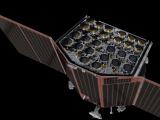
|
17/01/2022
Plato exoplanet mission gets green light for next phase On January 11, ESA's PLATO mission, in which the Institute of Astrophysics of Andalusia (IAA-CSIC) participates, received the green light to continue its development after successfully passing the review of critical milestones |

|
25/01/2022 - 12:30
Cosmological QUOKKAS: Proof of concept and early results on the Hubble Constant tension Distances are one of the most important yet difficult to get quantities in astronomy. Normally, astronomers use redshifts (which are relatively easy to measure) as distance measure, but this only works if one assumes that there is a relationship between redshift and distance. The relationship between redshift and distance was first observationally verified in the 1920s by Edwin Hubble. He found that the further away a galaxy was, the galaxy... Dr. Jeff Hodgson |

|
13/01/2022
Re-encounter with a planetary nebula 30 years later reveals changes and a possible companion star The Institute of Astrophysics of Andalusia (IAA-CSIC) leads a study based on data from Calar Alto Observatory (CAHA), showing the variability of the planetary nebula IC4997 |
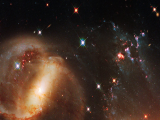
|
23/05/2022 - 27/05/2022
IAA-CSIC Severo Ochoa Advanced School on Galaxy Evolution Granada |

|
20/01/2022 - 12:30
Astronomy for attaining sustainable development goals in Africa Education and its contribution to science, technology, and innovation are the key points for combating poverty in the long term. Education is also a key point for empowering girls and women, which is fundamental for achieving the United Nations Sustainable Development Goals (SDGs). Astronomy is a powerful tool to promote education and science but, in addition to that, it is also one of the leading sciences for bringing strong technological... Dra. Mirjana Povic |
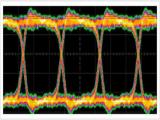
|
04/04/2022 - 08/04/2022
SO Instrumentation School VIII. Signal Integrity and Electromagnetic Compatibility in Electronic Devices Granada |
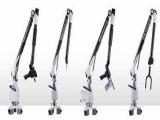
|
17/01/2022 - 22/01/2022
SO Instrumentation School VII. Metrology with PC-DMIS on a portable Romer Absolute Arms Granada |

|
14/03/2022 - 18/03/2022
English for Academic Purposes - an online workshop series for young researchers Granada |

|
22/12/2021
Oxygen found in the atmosphere of the hottest known exoplanet A team with the participation of the Institute of Astrophysics of Andalusia (IAA-CSIC) publishes the discovery of oxygen atoms in KELT-9b, the first detection of this compound in an exoplanetary atmosphere. |
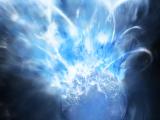
|
22/12/2021
Distinct pulses captured in the giant magnetic flare from a neutron star In just a tenth of a second, a magnetar -a particularly magnetic type of neutron star- released energy equivalent to that produced by the Sun in 100,000 years. Its study in detail has revealed multiple pulses at the peak of the eruption, which will make it possible to understand these still little-known giant magnetic flares |
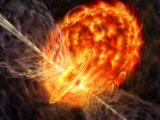
|
16/12/2021
The dramatic final dance of stars with shared envelope The Institute of Astrophysics of Andalusia (IAA-CSIC) participates in the study of fifteen peculiar stars that have turned out to be double stars that, after sharing an envelope, lost a large part of their mass |
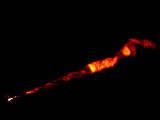
|
07/12/2021
Double helix structure observed in the jet emanating from the black hole in M87 galaxy Produced by the magnetic field, it is the first time that this structure has been observed at such far distances from the black hole. The Institute of Astrophysics of Andalusia (IAA-CSIC) participates in the discovery |
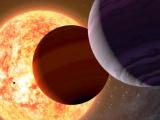
|
02/12/2021
Giant planets could reach maturity sooner than expected The Institute of Astrophysics of Andalusia (IAA-CSIC) participates in the study of the giant planets of the V1298 Tau system, which in just twenty million years have already reached their final size. The finding has been possible thanks to radial velocity measurements from the HARPS-N spectrographs, at the Roque de los Muchachos Observatory (ORM), and from CARMENES, at the Calar Alto Observatory (CAHA) |

|
05/05/2022 - 12:30
Unexplored outflows in nearby low luminosity AGNs: the case of NGC 1052 NGC1052 is considered the prototype of AGN-LINERs, an AGN family at low-luminosity for which, so far, the role of outflows in their evolution has been studied the less. Thanks to MUSE and MEGARA IFS-cubes we found that the stars are distributed in a dynamically hot disc whereas the ionised gas is detected mostly in the polar direction up to 3.3 kpc. We found evidences evidence of an ionised gas outflow (jet-powered) propagating in a cocoon of... Dra. Sara Cazzoli |
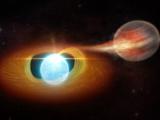
|
25/11/2021
On fire and in the process of breakind up by its star companion Found a system formed by a white dwarf star and a small object, possibly a planet, so close that the second is scorched by the star's radiation, causing its atmosphere to evaporate |

|
24/02/2022 - 12:30
SO Webloquio: Exploring the transient radio sky with the SKA and its precursors Radio astronomical observations probe particle acceleration in some of the most extreme environments in the Universe. For example, we can trace the relativistic jets produced by accreting black holes; observe flashes from hyper-magnetised neutron stars; and study the aftermath of stars that are ripped to shreds as they pass close to super-massive black holes. These events provide critical information about the extremes of the Universe, but they... Dr Jason Hessels |

|
27/01/2022 - 12:30
La IAU más cerca que nunca The International Astronomical Union (IAU) has more that 13000 members. Each country pays according to a table that has to do with the number of people belongin to the IAU. But the IAU is not only a club of members but has a number of activities that are open to every member. In particular the IAU run 9 Symposia per year with topics relevant to current astrophysics. On years where there are a General Assembly on top of the 9 Symposia the IAU... Dr. José Miguel Rodriguez Espinoza |

|
17/02/2022 - 12:30
The Africa Millimetre Telescope project - extending the EHT The Africa Millimetre Telescope (AMT) project led by the Radboud University and the University of Namibia aims to realise a new telescope on the Gamsberg mountain in Namibia to extend the existing network of telescopes that together form the EventHorizonTelescope (EHT). For the future of the EHT more independent nodes in the network are needed to increase the overal redundancy of the network and to improve the image quality and allow for time-... Dr. Marc Klein Wolt |

|
17/11/2021
Discovery of a possible satellite galaxy of M33, a neighbouring Local Group galaxy M33, also known as the Triangle galaxy, is the third largest galaxy in the Local Group, after Andromeda and the Milky Way. The finding is part of the search for the "lost satellites", which tries to resolve the discrepancy between the galaxy formation models and the observations of the Local Group galaxies |

|
11/11/2021
New perspectives on the problem of galaxies without dark matter The discovery of numerous very low surface brightness galaxies in the environment of NGC 1052 provides a crucial clue to the debate about the lack of dark matter in some galaxies of this group. The new data points to the existence of a group of galaxies closer than NGC 1052, to which these anomalous galaxies would belong, and the proximity would solve the problem |
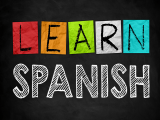
|
21/10/2021 - 22/02/2022
Spanish for beginners at the IAA-CSIC Granada |
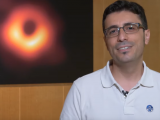
|
23/10/2021
Rocco Lico awarded with a 2021 EHT Early Career Award Rocco Lico awarded with a 2021 EHT Early Career Award |

|
15/11/2021 - 19/11/2021
SO Instrumentation School: V. Project management in the 3DExperience environment, including document and requirements management On line |

|
13/10/2021
Planetary system found similar to the future of the Solar System after the Sun's death Scientists from the IAA-CSIC are involved in the discovery of a system formed by a white dwarf star and a planet similar to Jupiter. The discovery, published in Nature, shows that planets can survive the death of their star. |

|
11/01/2022 - 12:30
SO Webloquio: Active Galactic Nuclei as seen from the 7 X-ray eyes of eROSITA Active Galactic Nuclei (AGN) are not longer considered part of a small and exotic source population but are now widely accepted to play a significant role in the evolution of galaxies through cosmic time. However, even 20 years after the realization of the close link between the galaxies and the active SMBH that they host, the various mechanisms and the interconnection are not fully clear. Two complementary approaches are followed to deepen our... Dra. Mara Salvato |

|
09/06/2022 - 16:30
SO Webloquio: Space Weather in an Era of Innovative Science The newest generation of solar observational data is allowing a pivot toward making connections in the various solar physics domains and facilitating advanced modeling for space weather conditions and impacts. We study important physical couplings in the solar atmospheric layers, as well as connections from the solar corona through the heliosphere. To advance our understanding of how solar activity and variability impact space weather conditions... Dr. Holly Gilbert |

|
10/03/2022 - 12:30
The RoboPol Program: Optical Polarimetric Monitoring of Blazars Blazars are a subclass of Active Galactic Nuclei with relativistic jets pointing at us. For this reason the highly amplified polarized synchrotron emission from their jets dominates in the optical band. Typically, the electric vector position angle (EVPA) of the optical polarized emission in blazars varies in an erratic way. However, in rare cases the EVPA displays long, smooth and monotonic rotations. Being puzzled by this phenomenon missing a... Dr. Dimitriy Blinov |

|
23/11/2021 - 12:30
Search for MIlli-LEnses (SMILE) to discriminate between dark matter models Projects aimed at characterising dark matter properties make use of very different approaches. One such approach is to look for strong gravitational lens systems. Gravitational lensed images with angular separation on milliarcsecond scales probe gravitational lens systems where the lens is a compact object with mass in the range 10^6-10^9 solar masses, i.e a supermassive compact object (SMCO). This mass range is particularly critical for the... Dra. Carolina Casadio |

|
03/03/2022 - 12:30
The continuous rise of bulges out of galactic disks A tantalizing enigma in extragalactic astronomy concerns the chronology and driving mechanisms of the buildup of the central luminosity excess (bulge) in spiral galaxies like our Milky Way, i.e. in systems referred to as late-type galaxies (LTGs) in the Hubble classification scheme. The standard scenario envisages a two-phase galaxy formation process, with the bulge assembling first in a quick and violent quasi-monolithic episode, with the disk... Dr. Iris Breda |

|
04/11/2021 - 12:30
Identification and characterisation of emission line galaxies with J-PAS The Javalambre-Physics of the Accelerating Universe Astrophysical Survey (J-PAS) is expected to map thousands of square degrees of the northern sky with 56 narrow band filters (spectral resolution of R around 60) in the upcoming years. This resolution allows to study emission line galaxies (ELG) with equivalent widths of a few armstrongs. Meanwhile the Pathfinder J-PAS camera observed 1 deg^2 with the same photometric system than J-PAS, named... Gines Martinez Solaeche |

|
14/10/2021 - 12:30
The miniJPAS survey: the galaxy populations in the miniJPAS cluster mJPC2470-1771 Galaxy clusters are one of the largest structures in the Universe. Due to the interaction among the galaxy members, they are a great laboratory to study the role of the environment in galaxy evolution. J-PAS survey will soon start to scan thousands of square degrees in the sky, and with its large great field of view (4.2 square degrees) and filter system (56 narrowband filters and 4 broadband filters in the optical spectral range) will provide... Julio Rodriguez Martin |
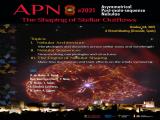
|
04/10/2021 - 08/10/2021
Asymmetrical Post-main-sequence Nebulae 8 e2021: The Shaping of Stellar Outflows Online |
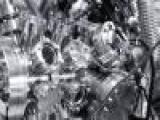
|
20/10/2021 - 22/10/2021
SO Instrumentation School: IV. Vacuum Technology Granada |

|
13/01/2022 - 12:30
Galaxy morphologies in multi-wavelength surveys In this talk I will present novel results obtained by using a combination of broad and narrow band optical photometry, from the J-PAS and S-PLUS surveys, in the determination and study galaxy of galaxies’ morphologies. In particular we used Morfometrika and GALFITM to recover non-parametric and parametric values to characterize galaxies’ shapes, as well as a deep learning method for the S-PLUS survey to classify galaxies into early and late type... Dra. Arianna Cortesi |

|
28/10/2021 - 12:30
Seen the Unseen in Planetary Nebulae with High-dispersion Integral Field Spectroscopic Observations Planetary nebulae (PNe), the short-lived progeny of low- and intermediate-mass stars, may embed structures with varying kinematical, physical and chemical properties that disclose the rich variety of processes occurring during their formation. These structures hide in direct images, projected against the bright nebular emission, but the advent of high-dispersion integral field spectroscopic (HD IFS) observations provide the means to... Dr. Martín Guerrero |

|
21/10/2021 - 12:30
Unveiling the dynamical stage of galaxy clusters through the intracluster light The intracluster light (ICL) is the most unexplored component of galaxy clusters. It is defined as a low surface brightness, extended emission composed by stars that are bound by the potential of the cluster but do not belong to any galaxy in particular. Simulations predict that minor and major mergers can mainly drive the formation of ICL, specially for z Dra. Yolanda Jimenez-Teja |

|
16/12/2021 - 12:30
Lighthouse Piercing Through the Storm Clouds in Massive Star Formation Massive stars play crucial roles in determining the physical and chemical evolution of galaxies. They shape their environment from early in their protostellar phase when they blast the surrounding with powerful jets, up until their violent deaths in the form of supernova. However, they form deeply embedded in their parental clouds, making it challenging to directly observe these stars and immediate environments. Notwithstanding, their massive... Dr Ruben Fedriani |

|
09/12/2021 - 12:30
SO Webloquio: Unveiling the unseen magnetized universe with MeerKAT Galaxy clusters are known to harbour magnetic fields, the nature of which remains unresolved. Intra-cluster magnetic fields can be observed at the density contact discontinuity formed by cool and dense plasma running into hot ambient plasma, and the discontinuity exists near the second brightest galaxy, MRC0600-399, in the merging galaxy cluster Abell 3376 (redshift 0.0461). Elongated X-ray emission in the east–west direction shows a comet-like... Dr. James Chibueze |

|
25/11/2021 - 12:30
SO. Webloquia: AYA: projects and human resources in grants managed by the Spanish State Research Agency This presentation will review data and results of the national calls for projects and human resources managed by the AYA team in the AEI: research projects (PGC and Challenges), acquisition of scientific-technical equipment, proof of concept projects and strategic projects; and human resources, predoctoral hiring FPI, Juan de la Cierva training, Juan de la Cierva incorporation, Ramón y Cajal and R+D+I technical staff. Dra. Inmaculada Dominguez |
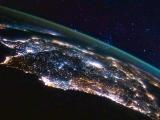
|
27/09/2021
Light pollution has increased by at least 49% in the last 25 years The study only includes data from satellites, very limited for the detection of blue light (the most polluting), so that the real increase can amount to 270% globally. The investigation reveals the seriousness of a problem that, according to experts, will worsen if the draft Royal Decree for energy efficiency is approved according to the current proposal |

|
10/02/2022 - 12:30
A high-fidelity sky mock of DESI galaxies in the LCDM cosmology By using N-body simulations in which different cosmologies have been assumed and by comparing them with large-scale galaxy surveys, we can constrain cosmological parameters, even ruling out some cosmological models. In this talk I will describe how we use the Uchuu simulation for this purpose. Uchuu is an N-body dark matter simulation that has been created by an international team of researchers from Japan, Spain, USA, Argentina, Australia,... Julia Ereza |

|
02/12/2021 - 12:30
The PUMA project. Mergers and feedback in local ULIRGs resolved by ALMA and MUSE+AO Galaxy mergers and interactions have a key role in the evolution of galaxies, specially at high-z when they were more common than today. Mergers trigger starbursts and AGN activity, which are both regulated by negative feedback processes, as well as can turn spiral galaxies into massive quiescent objects. The local counterparts of these major interactions and mergers are local ULIRGs (L(IR)/Lsun > 1e12) which, thanks to their proximity, allow... Dr. Miguel Pereira Santaella |

|
22/09/2021
Remnants of the historic supernova of 1181 suggest it originated from the merger of two stars Chinese and Japanese texts documented the appearance of a supernova in the year 1181, and now the remnant of that explosion is located |

|
07/10/2021 - 12:30
X-ray binary accretion states in AGN? Sensing the accretion disc of supermassive black holes with mid-IR nebular lines Accretion states, which are universally observed in stellar-mass black holes in X-ray binaries, are also anticipated in active galactic nuclei (AGN). This is the case at low luminosities, when the jet-corona coupling dominates the energy output in both populations. Previous attempts to extend this framework to a wider AGN population have been extremely challenging due to heavy hydrogen absorption of the accretion disc continuum and starlight... Dr Juan Antonio Fernández Ontiveros |

|
03/02/2022 - 12:30
SO Webloquio: The Milky Way's young substellar population Young clusters and star forming regions are home to a large number of substellar objects with masses below the hydrogen-burning limit at 0.075 MSun. Most of our knowledge about their populations comes from nearby regions (d lower 400 pc), where we find consistent formation rates of 2-5 young brown dwarfs per 10 newborn stars. Brown dwarf theories, on the other hand, predict that high gas or stellar densities, as well as the presence of massive... Dra Koraljka Muzic |

|
11/11/2021 - 12:30
SO Webloquio: Stellar winds and their effects on exoplanets As the wind outflows from a star, it permeates the interplanetary medium, interacting with any planet it encounters. In this talk I will review some recent works on winds of low-mass stars and discuss the impact stellar winds can have on surrounding exoplanets. Compared to the physical interactions known to take place between the solar wind and the solar system planets, the interaction between stellar winds and exoplanets can be significantly... Dra Aline Vidotto |

|
14/09/2021
The IAA is participating in the development of 'Uchuu', the most accurate and complete simulation of the universe. An international team of researchers has developed the most realistic simulation of the universe to date. The creation, named Uchuu (which means universe in Japanese) has been made possible thanks to ATERUI II (Japan), the most powerful supercomputer in the world, built by the National Astronomical Observatory of Japan (NAOJ) to facilitate the understanding of different astronomical phenomena from a theoretical point of view. This virtual... |

|
15/09/2021 - 16/09/2021
IV Course on Scientific Dissemination Techniques Granada |

